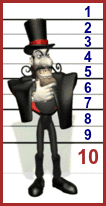
Home
Privacy, Terms & Conditions
Occasional Papers
Ancient Mysteries
BOOKSHOP
Epsom and Ewell Waters
Archives/Reviews
Awards Gallery
Destiny
Malvern Waters and Malverns Worldwide
Somerville Diaries
Grotto News
Grotto Essays
Grotto.DirectoryGB Grotto Grading 
PROMOTING GREATER GROTTOES (click the above heading to go direct to the Great British Grotto Grading Index of graded grottoes.)
In order to aid the identification and exploration of the best heritage grottoes the Minstrels of Mythology have created the Grotto Grading. This was inspired by the eighteenth century travels of Arthur Young and other early travel diarists. It enables those interested to be aware of surviving grottoes and their present state. A field trip can then be planned to rediscover these fascinating sites.
Grottoes fall into several categories, religious, garden and leisure, tunnels and underpasses, ornamental rooms in buildings, etc. Our principal interest is the leisure grotto as seen in the sculptured landscapes of great parks and gardens. The first Italianate grotto in England was the Grove of Diana at Henry VIII's Nonsuch Palace in the 16th century. The tradition of the mystic grotto as a 'heavenly cave' landscape feature was established by the ancient Greeks and Romans. In Britain, grottoes became a fashionable feature to have on the estates of the wealthy from the 17th century onwards. Over the centuries the concept of a cave with spiritual associations extended into religions, spa health facilities and many other applications including even Father Christmas and children building small street grottoes to celebrate Grotto Day, the 25 July.
These cave like structures had several necessary requirements. Italianate garden grottoes were a place of mystery and awe where the visitor could indulge in mythological fantasies. Essentials included a sacred spring and portrayals of gods and creatures that inspired the imagination. In addition the creative use of natural materials such as tufa, semi precious stones and sea shells together with statues and re-used architectural features, coupled with fireworks, music and mystery enactments created a place where the imagination could run riot. 


GREAT BRITISH GROTTO GRADING
In search of the mystical - great grottoes get good grading.
Below is our guide to the parameters used in judging the grading of a grotto based on the observations of Arthur Young and other early travellers. The grading refers to the condition a visitor would find today and not to former glory.
+ Stunning setting and location.
+ Sacred spring or integral water feature.
+ Dark and mysterious chambers and cave like spaces.
+ External rock structures, either real or simulated.
+ Fossils and/or shells incorporated into the decor.
+ Crystals and/or minerals, either natural or simulated.
+ Cared for and maintained in good condition.
+ Internal stonework that is natural, recycled or simulated to give a subterranean decor.
+ A created provenance that links it to ancient mythology or legend.
+ Viewing points within to an intriguing landscape outside.
Grottoes ticking all the boxes are graded 10, down to 1 for those only achieving a single tick. A '0' means nothing is left to see. Whether a box should be ticked can in certain instances be debated. Our judgement is used in establishing the grading for individual grottoes and others may not necessarily concur with our assessment. If this is the case we welcome opinions being referred to The Minstrels of Mythology but would stress that the grading expressed is our best view for the purposes of this web site.
The Minstrels of Mythology are a voluntary group of mature enthusiasts working in conjunction with the Research Fellowship. Grading is carried out with a field visit backed up by desk research. Funding comes from the individuals concerned in return for an opportunity to visit what are usually unusual and interesting locations. And in case you are wondering, although characterised by the cartoon figure in the top hat, we do not visit wearing such apparel.
For more infomation contact Dr Bruce Osborne at the Research Fellowship
